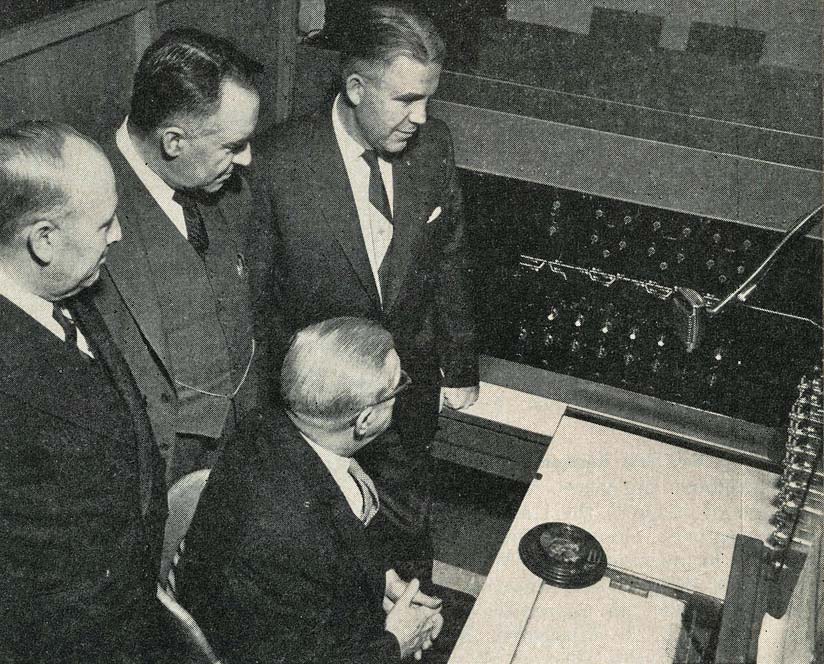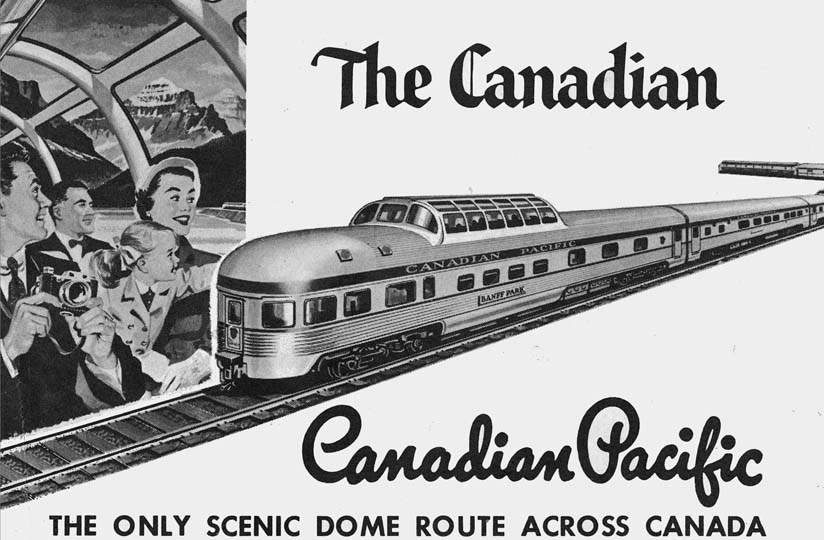
New Centralized Traffic Control System Is Inaugurated

ON 28 Jan 1958 the first major step in long distance operation of trains by Centralized Traffic Control became a reality when D.S. Thomson,
vice-president, turned the switch and signal levers to route Train 35 through Glen Tay on the Company's Belleville Subdivision. Other Company officials
attending this ceremony included G.H. Baillie vice-president Eastern Region, J.R. Strother general manager, and G.W. Miller regional engineer.
Signal Indication
This new Centralized Traffic Control system permits control of signals and switches by a dispatcher seated before the control panel in Toronto. The position of all switches, signals, and locations of trains on his territory are indicated by lights on a track diagram. Since all trains operate entirely by signal indication, C.T.C. does away with train orders. Sidings, having a capacity of 150 freight cars, spaced 9 to 11 miles apart will permit meets to be made with the least possible delay as trains will no longer have to stop to hand throw switches.
By the end of 1958, the Company's forces will have installed C.T.C. on the Belleville Subdivision (Glen Tay to Trenton), a distance of 87.1 miles. The C.T.C. control panel is designed to permit this electronic train control system to be extended to Agincourt over the Oshawa Subdivision.
At present, the Company has a total of 52.1 miles of C.T.C. in operation across the system at 10 various locations, mainly in terminal areas.
Nerve centre for the Company's new C.T.C. operation on the Eastern Region is located in the Toronto Union Station. By means of miniature levers and push buttons, the dispatcher can operate switches and clear signals to permit various train movements.
Colored Lights
The progress of trains is shown on the track diagram by various colored lights. A graph automatically makes a permanent record of the trains position at all times.
Sidings Enlarged
Prior to the installation of Centralized Traffic Control on the Belleville Subdivision (Glen Tay to Trenton) there was a total of 16 sidings, 60 to 80 car lengths long, that required use of hand throw switches whenever a train had to move off the main track.
Under the new system, eight sidings will be removed and the remaining eight lengthened to a 150 car capacity. These sidings have switches at each end that are electric power operated and remotely controlled by the dispatcher in Toronto.
"Syneroscan"
The major items of signal equipment were manufactured by the General Railway Signal Company of Rochester, New York. The control and indication system is known as "Syneroscan" and is one of the latest developments in railway signalling. A large portion of the system is electronic and it utilizes hundreds of miniature radio tubes.
The design and installation of the system was under the direction of R.I. Becksted, signal engineer, and Douglas Walkington, assistant engineer, in
charge of C.T.C. installation. Others assisting in the signal installation included: E. Pitt assistant signal engineer, J.R. Taylor signal field
supervisor, E.G. Prinn signal construction supervisor, and G.C. Gunning assistant signal construction supervisor.

 and is reprinted here with their permission.
All photographs, logos, and trademarks are the property of the Canadian Pacific Railway Company.
and is reprinted here with their permission.
All photographs, logos, and trademarks are the property of the Canadian Pacific Railway Company.